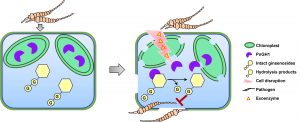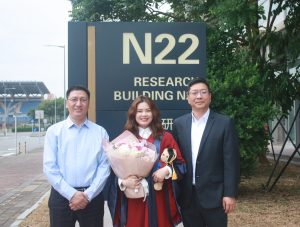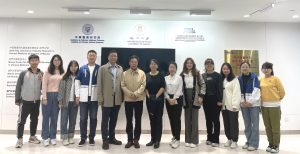A research team led by Wan Jianbo, professor at the Institute of Chinese Medical Sciences and the State Key Laboratory of Quality Research in Chinese Medicine of the University of Macau (UM), in collaboration with research teams from Beijing University of Chinese Medicine and Southwest Forestry University, has made a groundbreaking discovery in the plant chemical defence of traditional Chinese medicine Sanqi (Panax notoginseng). The study unveiled a two-component chemical defence system in Panax notoginseng mediated by chloroplast-localised β-glucosidase and 20(S)-protopanaxadiol ginsenosides, which will contribute to a deeper understanding of how Panax species defend against pathogens and provide valuable insights for the development of sustainable botanical pesticides. The research results have been published in the internationally renowned journal Nature Communications.
Plants produce secondary metabolites as a response to various environmental threats, enabling them to adapt and play a crucial role in chemical defence. The research originated from unexpected findings during a quality control study of Panax notoginseng leaves. After meticulous investigations, the research team unveiled a two-component chemical defence system in Panax notoginseng leaves. The system comprises a chloroplast-localised β-glucosidase, PnGH1, and its substrates, 20(S)-protopanaxadiol ginsenosides. The β-glucosidase and its substrates are spatially separated in cells under physiological conditions. Ginsenoside hydrolysis is activated only when exoenzymes produced by pathogenic fungi disrupt the plant’s chloroplast. The activation of PnGH1-mediated hydrolysis produces a series of less-polar ginsenosides through selective hydrolysis of outer glucose at the C-3 site. These newly formed ginsenosides exhibit a broader spectrum and more potent antifungal activity. The researchers also found a similar two-component chemical defence system in other Panax species, such as ginseng (P. ginseng), and American ginseng (P. quinquefolium). These findings shed light on the development of botanical pesticides and are hoped to reduce reliance on chemical pesticides in the cultivation of Panax species, thus contributing to the advancement of research in traditional Chinese medicine and the sustainable development of the industry.
The corresponding authors of the study are Wan Jianbo; Shi Shepo, researcher from the School of Chinese Materia Medica at Beijing University of Chinese Medicine; and He Xiahong, professor at Southwest Forestry University. The co-first authors are Ma Lijuan, postdoctoral researcher at UM, and Liu Xiao, associate researcher at Beijing University of Chinese Medicine. The research project was supported by UM (File no: MYRG2022-00020-ICMS), the Science and Technology Development Fund of the Macao SAR (File no: 0052/2022/A1 and 005/2023/SKL), the Open Research Project Program of the State Key Laboratory of Quality Research in Chinese Medicine at UM (File no: SKL-QRCM-OP23012), the Open Fund of the State Key Laboratory of Bioactive Substance and Function of Natural Medicines (File no: GTZK202203), the Ministry of Agriculture and Rural Affairs of China (File no: CARS-21), and the Major Science and Technology Project of Yunnan (File no: 202204BI090003 and No. 202205AF150018). The full version of the research article can be viewed at https://www.nature.com/articles/s41467-024-44854-7.
| Source: Institute of Chinese Medical Sciences | |
| Media Contact Information: | |
| Communications Office, University of Macau | |
| Albee Lei | Tel: (853) 8822 8004 |
| Jason Leong | Tel: (853) 8822 8322 |
| Email: | prs.media@um.edu.mo |



